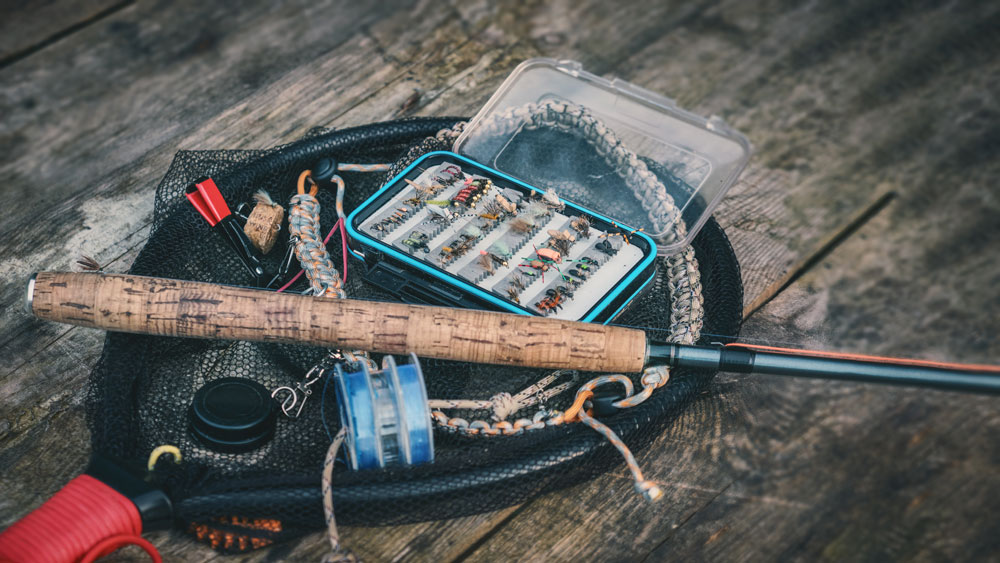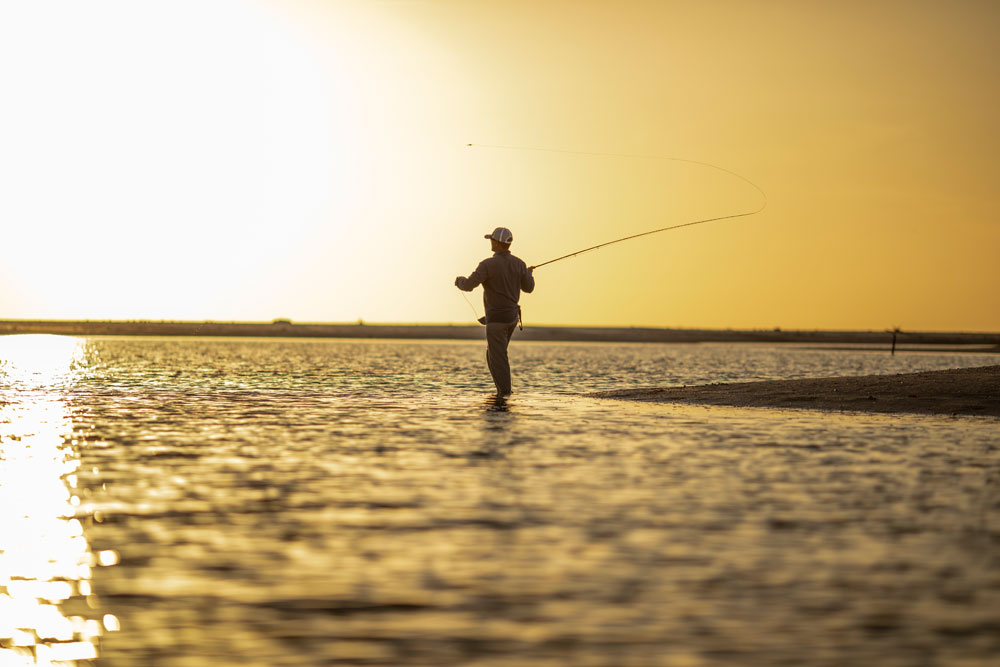From the gear to the many types of flies and tackle, fly fishing can be relatively complex. However, there is a form of fly fishing lauded for its simple and effective nature: tenkara. A rare but simple type of fly fishing born in Japan, tenkara is primarily used to fish for trout and other fish in the freshwater mountain streams. Tenkara fly fishing in Japanese means “fishing from heaven” or “fishing from the skies.”
Here’s why so many anglers give tenkara fishing a 10/10 and our ultimate guide to fly fishing without a reel like a pro.
History of Tenkara
Tenkara fishing’s origins began in Japan at least two centuries ago, but this form of sport fishing wasn’t referenced in the western world until the 1870s when a book titled Diary of Climbing Mt. Tateyama was published. This unique type of fly fishing originated in Japan’s mountain streams among professional anglers who found it effective for catching the native fish. In its early days, anglers used a rod made of bamboo cut and treated for its light weight and long reach.
It wasn’t until the 1950s that tenkara resurfaced as a popular sport fishing method and spread across Japan. Almost 60 years later, Daniel Galhardo, the founder of Tenkara USA, became the first person to introduce this rare form of fly fishing outside the country of Japan. Since then, anglers around the world have taken to utilizing this unique fly fishing technique.

Why Use Tenkara?
Today, tenkara anglers are drawn to this unique method of fly fishing because of its simplicity and effectiveness. Utilizing a long tenkara rod, it allows anglers to achieve accurate casting and to drift without drag. These qualities and more are what make tenkara a go-to form of fly fishing for beginners.
Unlike modern fly fishing, the tenkara rod lacks a reel. Instead, the fishing line is tied directly to the tip of the rod. The rod is made with a flexible tip that effortlessly absorbs a fighting fish’s shock, for a minimalist fishing experience.
This fly fishing method is effective because the line can be kept off the water, even from long distances, without the currents dragging the line. Tenkara anglers also use a tight line, which makes it easier to hook and catch a fish.
Another reason anglers are attracted to tenkara fly fishing is the intuitive nature of this fishing technique. Unlike contemporary fly fishing, you don’t have to spend a long time learning how to cast. Instead, most learn within minutes and can be present in the moment and the experience. You can also pay closer attention to where the fish are to present the fly to them. Trout anglers need to read and break down trout streams to identify where the fish are likely to be and where to cast.
While tenkara is considered a simpler way to fly fish, what to wear when fly fishing is still critically important. Without the right clothing and equipment, your fly fishing trip could become bogged down by discomfort in poor weather.
Choosing a Tenkara Rod
Tenkara rods are appealing to many anglers because they require minimal equipment, don’t have a reel and are easy to transport, especially when hiking and backpacking. Many of the rods can be telescopedto fit into a small sleeve.
Tenkara rods come in varying lengths, and some are even adjustable. Typically, the longer the rod, the more success you’ll have on wider streams, rivers and ponds. However, sometimes a shorter rod comes in handy. For instance, if you plan to fish in smaller, tighter streams, using the rod at its shortest length is preferable.
Just as the mend is important when casting up and across the current during traditional fly fishing, there are times you must reposition the fly line on the water with tenkara fishing. However, many anglers find it easier with a tenkara rod because they are less prone to dragging.
Beyond the rods’ length, most tenkara rods include a progressive taper, are lightweight and have a responsive tip for when your catch fights back. Most tenkara anglers prefer rods with a bigger backbone for bigger fish that make landing large fish easier. If you only have room to carry one rod on your travels, you might consider an all-around model that can be adjusted in length to accommodate various sizes of streams, rivers and ponds.
Choosing a Tenkara Line
Tenkara lines are specially designed to enable anglers to cast a near-weightless fly. Tenkara lines don’t have a leader but use a tippet, which is a thin line between the fly and the main tenkara line.
The type of line ultimately depends on your personal preference. For instance, some prefer the softer cast taper lines offer, while others like the versatility that comes with level lines. Tenkara lines’ lengths are fixed, although they can easily be switched for a shorter fishing line when necessary.
The main qualities an angler should look for in their tenkara rods are visibility and weight. It should be visible, so the angler easily tracks it, but the snippet line should verge on invisible so fish do not easily detect it. When it comes to weight, it needs to be heavy enough to cast but light enough to stay off the water when the fly lands. If it’s too heavy, the line will sink. If it’s too light, the line will be hard to cast.

How to Choose a Tenkara Fly
Tenkara is all about technique, so, when choosing a fly, it’s less about the fly you use and more about how you use it. However, as with most fly fishing, the larger the fly, the easier it is for the fish to spot it.
The Takeaway
Tenkara is a widely appreciated method of fishing that simplifies the sport of fly fishing. For many, it’s a simple and intuitive way of landing a great catch without all the complex equipment and learning that go into traditional fly fishing while still enabling anglers to learn a range of techniques to improve their fishing skills.




























